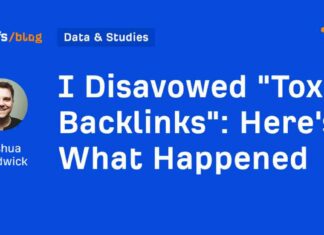Optimizing Value-Based Bidding for Maximum ROI: Fueling Your Lead Goals
As we approach the culmination of our exploration into value-based bidding, it’s essential to dig deeper into how we can optimize this strategy to ensure maximum return on investment (ROI) and fuel our lead generation goals. From determining the suitability of value-based bidding for your business to implementing the right bid strategy, we have covered a significant amount of ground in our journey.
Measuring Performance: When and How
Once you have executed your value-based bidding strategy in your campaigns, the next crucial step is to analyze performance. To gain a clear understanding of how your campaigns are performing, it is recommended to have a minimum of 50 conversions or a full month of data, whichever comes first. This ensures that you have sufficient data to work with for accurate evaluation.
It’s important to exclude the initial ramp-up period when your campaigns are still learning and gathering data. This exclusion ensures that you are analyzing stable and representative performance without any skewed results.
Evaluating Performance: Key Metrics to Focus On
In value-based bidding, two key metrics play a significant role in evaluating performance:
– **Conversion Value:** This metric represents the total value generated from conversions driven by your ads. It quantifies the monetary worth of the actions users take after clicking on your ad, whether it’s making a purchase, signing up for a service, or subscribing to a newsletter.
– **Average Target Return On Ad Spend (ROAS):** This metric reflects the traffic-weighted average ROAS that your bid strategy optimized for over a specific time period. It is essential to track this metric to gauge the effectiveness of your bidding strategy and make informed decisions.
Optimization Strategies: Balancing Efficiency and Growth
In the realm of value-based bidding, optimizing your campaign is akin to fine-tuning a car for optimum performance. Your target ROAS and budget act as controls that influence the speed and efficiency of your bidding strategy. Here’s how you can balance efficiency and growth through optimization:
– **Target ROAS:** Think of this as setting your cruise control. Adjusting your target ROAS determines how aggressively your bids compete in auctions. A higher target ROAS leads to more conservative bids, prioritizing efficiency, while a lower target ROAS allows for more aggressive bidding, focusing on growth.
– **Budget:** Your budget serves as the fuel for your bidding strategy. Ensure that your budget aligns with your target ROAS and provides the system enough room to optimize effectively. Having a sufficient budget is crucial for achieving your desired return on investment.
Understanding the interplay between your controls is essential for optimizing your value-based bidding campaign effectively. Just like in driving a car, how you use these controls directly impacts your overall performance and success.
Optimization Tools for Enhanced Performance
Apart from setting target ROAS and budgets, there are additional tools and features that can help you further optimize your value-based bidding campaigns:
– **Bid Simulators:** These tools allow you to experiment with different ROAS targets and visualize the impact on key metrics like conversions and costs. They provide valuable insights into how adjusting your targets can affect the performance of your campaigns.
– **Bid Strategy Report:** This report offers detailed insights into your campaign performance over time. It helps you understand how your bids are performing, identify any anomalies, and pinpoint areas for improvement. The report also includes valuable metrics like conversion value delay and actual ROAS.
– **Performance Planner:** This tool enables you to forecast target and budget scenarios across your campaigns. By simulating relevant ad auctions and considering variables like seasonality and competitor activity, the Performance Planner helps you make informed decisions for optimal campaign performance.
– **Portfolio Bidding & Shared Budgets:** These features allow you to allocate spend across a group of campaigns effectively. Shared budgets can be particularly useful when using a target ROAS, as they automatically reallocate underused budget to campaigns that require additional funding.
Continual Optimization: Embracing the Journey
Optimization is an ongoing process that requires continuous monitoring and adjustment. As your business evolves and your understanding of your customers deepens, it is crucial to revisit your conversion values to ensure they accurately reflect the value of each lead.
By incorporating value-based bidding into your advertising strategies, you can move beyond mere customer acquisition costs and focus on driving meaningful returns in your campaigns. Equipped with the knowledge and tools to bid to value, you can steer your campaigns towards success and achieve your lead generation goals effectively.
In conclusion, by optimizing your value-based bidding strategy through a combination of data analysis, performance evaluation, and strategic adjustments, you can maximize your ROI and fuel your lead generation efforts for sustainable growth and success.























